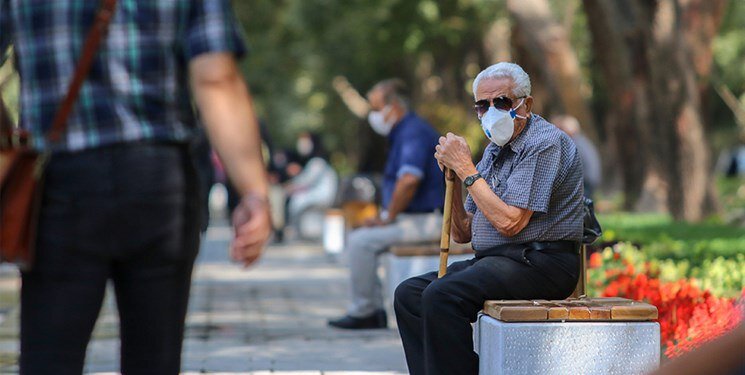Take the crisis seriously: Iran's elderly population to triple in 50 years

TEHRAN – Over the last 5 decades, the elderly’s population has increased from about 5 to 10 percent, and it is predicted that this rate will triple in the next 50 years so that it is vital to take the aging phenomenon seriously.
Farshad Sharifi, research deputy of the Elderly Health Research Center, on the eve of the International Day of Older Persons, called education and preparation of the elderly for adaptation to digital life an important necessity and said that Iran is one of the fastest aging communities.
On 14 December 1990, the United Nations General Assembly designated October 1st as the International Day of Older Persons. The 2021 theme “Digital Equity for All Ages” affirms the need for access and meaningful participation in the digital world by older persons.
Over the next three decades, the number of older persons worldwide is projected to more than double, reaching more than 1.5 billion persons in 2050. All regions will see an increase in the size of the older population between 2019 and 2050.
Iran is among countries with the highest pace of aging in the world. The largest increase (312 million) is projected to occur in Eastern and South-Eastern Asia, growing from 261 million in 2019 to 573 million in 2050. The fastest increase in the number of older persons is expected in North Africa and West Asia, rising from 29 million in 2019 to 96 million in 2050 (an increase of 226 percent).
Sharifi went on to say that these rapid demographic changes need serious attention to the need for health care, and can affect all elements of society, even the production cycle in the country.
Pointing out that learning digital technologies has an effective role in meeting the daily needs of the elderly, he added that teaching technology to the elderly, especially during the coronavirus pandemic, can provide conditions for the elderly to feel useful.
The elderly is more vulnerable to the pandemic as it affected many different aspects of their lives, such as social interactions, health care, severe trauma caused by social isolation, so that the policymakers have decided to reconsider their views on various areas of elderly health, he explained.
Iran is aging rapidly
Seyed Hasan Mousavi-Chalak, the head of the Iranian Social Workers Association, said that the country's elderly population is growing rapidly, and in the meantime, the most important concern of old age is living in perfect health.
The elderly, whose population is increasing every day, are facing all kinds of different problems, and if we do not think of a solution, we will certainly face the crisis of "old life" in near future.
Of course, in the last few years, coordination made to compile national documents for the elderly after about twenty years, he noted.
The document thoroughly focuses on various aspects of the elderly’s lives by meeting six prime objectives of income and livelihood, health, training and employment, and building an empowering environment, promoting the cultural level of society in the field of aging, and developing the infrastructure required for aging.
According to the document, life expectancy at birth in the world has risen from 64.2 in 1990 to 72.6 in 2019 and is expected to surpass 77.1 in 2050. In 2019, one in 11 people in the world is 65 and older (9%), while this figure is projected to reach one in six (16%) by 2050.
Iran is also one of the countries with the highest pace of aging in the world.
In demography, the population under the age of 15 is called “young”. In 1977, 46 percent of the people were young, while now 23 percent of the population are below 15 years of age.
Iran has achieved a demographic window of opportunity which in all other countries led to economic prosperity so that Iran must seize the opportunity now before its working-age population starts to shrink and get older in the 2050s.
Awareness of population age changes and political-economic planning based on it can be very important in the success of programs and policies. Comprehensive policy-making and planning should be tailored to the overall characteristics of this age group, he explained.
Issues to deal with premature aging
Saleh Ghasemi, a demographer, referring to the consequences of aging, stressed that all responsible institutions and organizations should be ready to deal with premature aging in Iran.
In the face of this crisis, the responsible organizations must think of a solution for the labor force, as some Western countries have been forced to accept immigrants due to labor shortages, he highlighted.
He went on to note that with the arrival of immigrants in the country, the culture of families and the level of social employment will be affected.
Stating that the elderly needs the most services and infrastructure in terms of social, economic, and health services, he said that it also threatens the country’s security, and the elderly population growth needs more welfare and social institutions, which affects the policies and capacities of the country.
If the trend continues, a huge amount of funds is needed to provide the population with insurance pension and two related organizations will be bankrupt, he lamented, adding that serious planning is needed to deal with the crisis.
FB/MG
